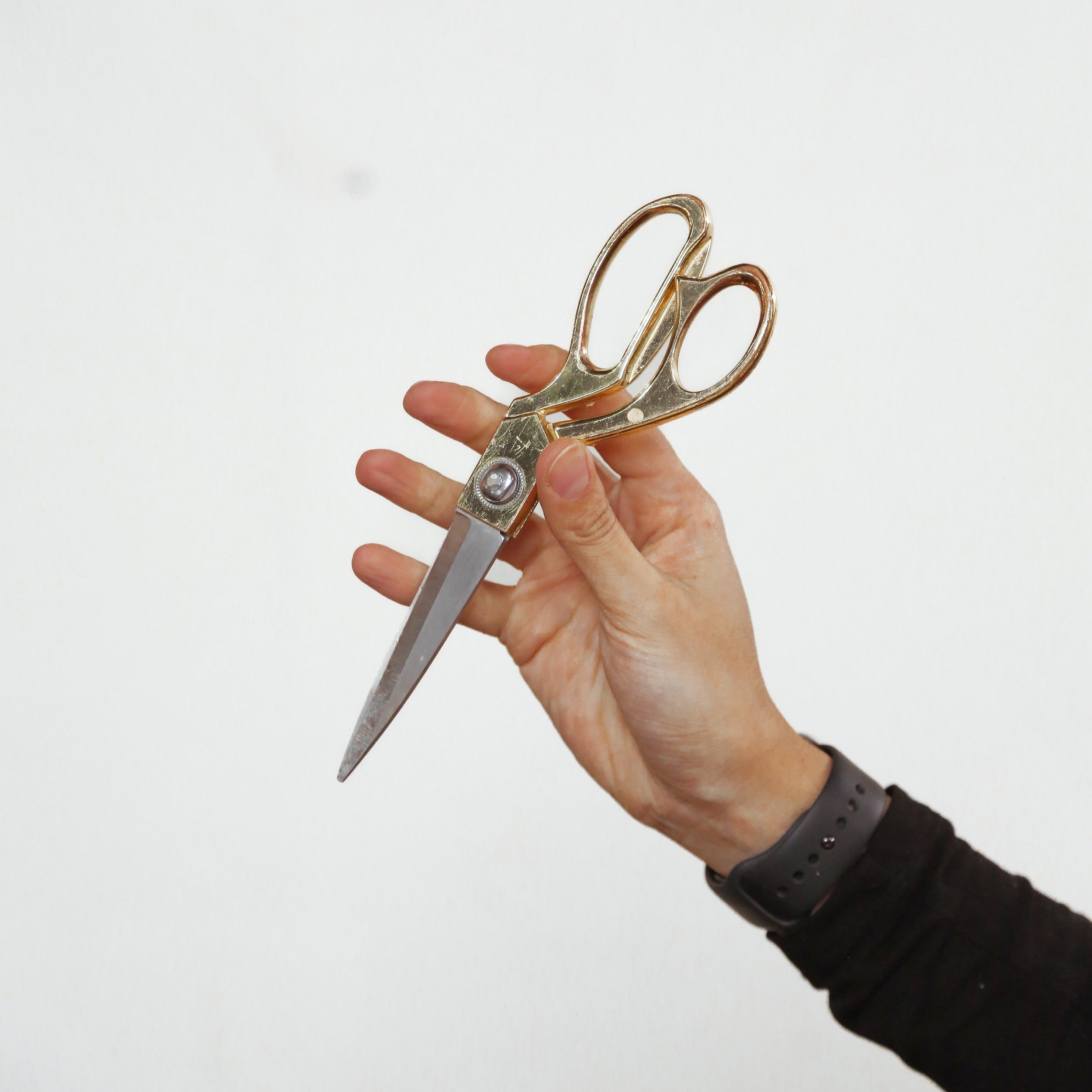HOW TO BUILD A BASIC DIY KIT
LET’S TALK ABOUT TOOLS & SUPPLIES
This article will go over 20 items we think are great to have on hand when you’re starting out on your DIY journey. Things we think that would be useful in ANYONE’S toolbox!
Let’s Get Started…
First up, measuring tape. 25’ tape is a great size to have for measuring out room dimensions and I love having a 6’ in my pocket whenever I’m out and about for quick measurements.
You may also want to have a fabric measuring tape for grabbing body measurements, sewing projects and measuring around curves.
2. Screwdriver
Having a couple of the most commonly used heads/sizes or even a multi-bit screwdriver will be incredibly useful. With all the different DIY projects you’ll encounter, you’ll run into many different screw heads.
3. Hammer
You’ll want a hammer on hand for hanging pictures, closing your paint can, installing drywall anchors, the list goes on. If you don’t think you’ll get much use out of the full size version, I love my baby hammer for quick jobs.
A spirit level is a great tool for making sure that things are perfectly horizontal - level - or vertical - plumb. Something might look like it’s going to hang straight, but it’s always a great idea to double check.
I’d start off with a small level like this and grab longer ones as you find yourself using them more and more.
It’s best to have DIY specific scissors so you’re not stealing the ones from the kitchen.
Utility knives are also a key cutting tool. With snap off blades you’ll always have a sharp tool at your disposal.
Hack: they’re also great as a scraper when you’re in a pinch.
I would suggest having some pliers. There’s so many types and sizes and I guarantee you know someone with an extra pair they’re not using. They will help you grip things and bend things, bonus points if you find a pair with wire cutters built in.
Sandpaper, sanding blocks, sanding sponges, something that’s going to help you remove material and smooth out your projects.
A coarse, a medium and a fine grit - something like 80, 120 and 220 grit, that’ll take care of almost any sanding project you have.
Safety equipment. Always have safety glasses, ear protection, dust masks, and gloves available. I like having both disposable gloves and work gloves.
There are many types and sizes. A hacksaw is small but fantastic for cutting all sorts of materials including some metals, but if you think you’ll want to cut a lot of wood pick up a wood saw like this, or when it comes to cutting any angles for things like trim, look at a mitre box and saw.
This doesn’t just have to be just for measuring, a metal straight edge can help you draw or cut a straight line.
A small jar of spackling and a putty knife can be great to fill small holes in drywall, or even in place of wood filler if you discover mid-project that you’re out…
Depending on your project, you may need different adhesives for different materials and it’s best to check each product to make sure it can handle what you need it to do, but to start consider: Hot glue, wood glue, or superglue.
There’s so many types of tape out there but for your day to day I love painters tape. it’s not just for painting, you can use it to measure, plot where to hang something, hold wood together while the glue dries, or visualize and plan. I once used it to plot out the size of a uhaul truck to make sure all my stuff would fit when I was moving.
15. Sharp Pencil & Good Eraser
This one is pretty self explanatory…
Whenever you need to reach a bit higher!
If you’re a true DIYer, clamps can act as a second set of hands to help you hold things, grip them or keep them together while drying.
If you’re planning to put anything up on your wall or ceiling.
for clothing or repairing your home goods, these are cheap and easy to pick up. This one even has a fabric measuring tape and scissors - score!
To get started on basic DIY projects, you don’t need to have power tools, but there is one that I can recommend - a cordless drill. This was my first power tool and it opened up this whole new world for me where if I see something I like, I can hang it, I can assemble it, I can build it, and this tool is always at arm’s reach as I do.
Just don’t forget your bits - spiral or twist bits for making holes and driver bits for installing screws.
That’s everything I recommend you start with in your Beginner DIY Kit. Bonus points if you can fit it all in a box that goes everywhere you do…
























